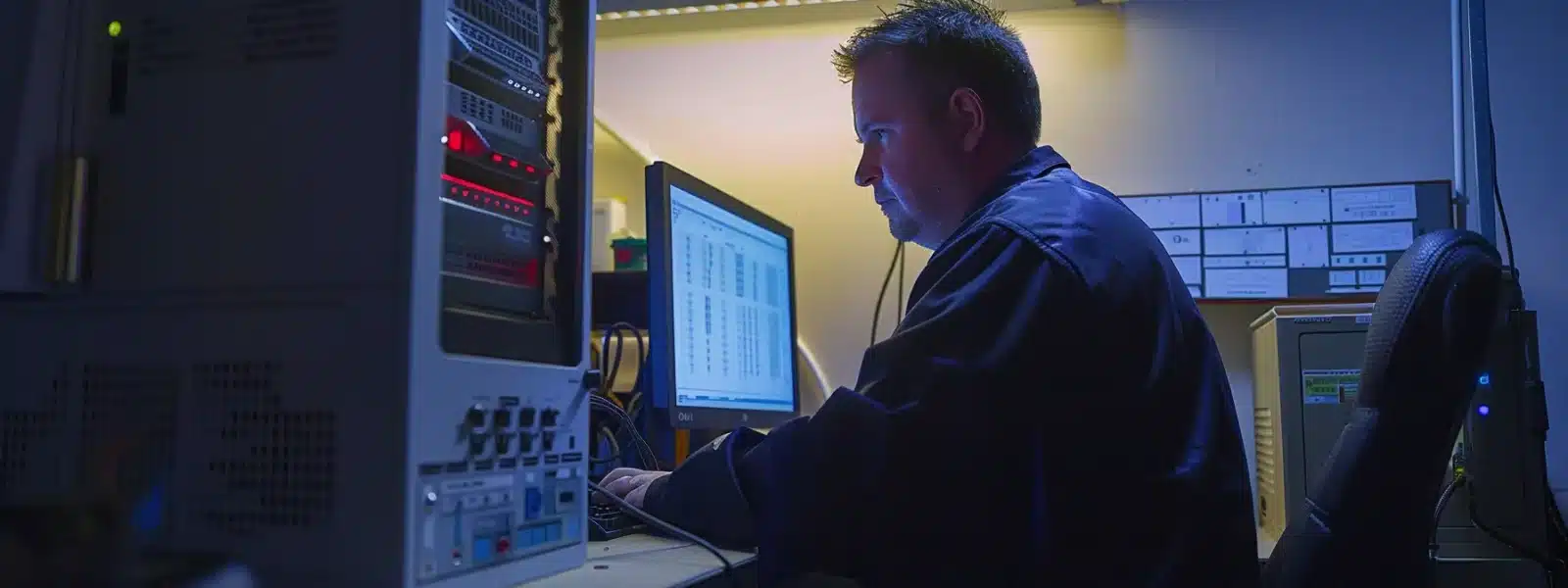Achieving CMMC compliance is not just a regulatory requirement; it is essential for safeguarding sensitive data and maintaining integrity in business operations. This article will explore key cybersecurity practices, including implementing access control measures and enhancing incident response strategies. By understanding these practices, businesses can effectively address common pain points, such as navigating the complexities of federal acquisition regulations and conducting thorough risk assessments. Engaging with this content will empower organizations to strengthen their cybersecurity posture and ensure compliance with CMMC standards.
Key Takeaways
- CMMC compliance enhances information security and strengthens asset management practices
- Achieving higher maturity levels demonstrates commitment to safeguarding sensitive data
- Regular audits foster a culture of accountability and continuous improvement in cybersecurity
- Employee training is essential for recognizing threats and ensuring effective incident reporting
- Compliance with CMMC opens doors to federal contracts and new business opportunities
Understanding the Importance of CMMC Compliance

The CMMC framework establishes essential standards for protecting controlled unclassified information (CUI) within the defense supply chain. Achieving compliance through cmmc consulting not only enhances information security but also strengthens asset management and configuration management practices. This compliance can significantly impact business operations and contract eligibility, ensuring organizations meet the rigorous demands of federal contracts.
Overview of the CMMC Framework
The Cybersecurity Maturity Model Certification (CMMC) framework is a regulatory requirement designed to enhance the security of controlled unclassified information (CUI) within the defense supply chain. It establishes a set of standards that organizations must adhere to in order to protect sensitive data effectively. By implementing these standards, organizations can improve their risk management practices, ensuring that they are better equipped to handle potential threats to their information security.
The CMMC framework is structured around five maturity levels, each building upon the previous one, which allows organizations to progressively enhance their cybersecurity posture. This tiered approach not only facilitates a clear path for compliance but also aligns with the expectations set forth by the Under Secretary of Defense for Acquisition and Sustainment. Organizations that achieve higher maturity levels demonstrate a commitment to safeguarding their assets and maintaining the integrity of their operations, which is crucial for securing federal contracts.
Compliance with the CMMC framework is not merely a checkbox exercise; it requires organizations to integrate cybersecurity into their overall business strategy. This integration fosters a culture of security awareness and accountability, which is essential for protecting sensitive information. As organizations navigate the complexities of CMMC compliance, they must prioritize continuous improvement and adaptation to emerging threats, ensuring that their cybersecurity measures remain robust and effective:
| Maturity Level | Description | Key Focus Areas |
|---|---|---|
| Level 1 | Basic Cyber Hygiene | Access Control, Awareness Training |
| Level 2 | Intermediate Cyber Hygiene | Risk Management, Asset Management |
| Level 3 | Good Cyber Hygiene | Incident Response, Configuration Management |
| Level 4 | Proactive Cyber Hygiene | Threat Intelligence, Continuous Monitoring |
| Level 5 | Advanced/Progressive Cyber Hygiene | Advanced Risk Management, Asset Protection |
Benefits of Achieving Compliance
Achieving CMMC certification provides organizations with a structured approach to managing risk associated with controlled unclassified information (CUI). By adhering to the CMMC framework, businesses can implement robust access control measures that protect sensitive data from unauthorized access. This proactive stance not only enhances security but also builds trust with clients and partners, demonstrating a commitment to safeguarding information.
Organizations that successfully navigate the CMMC certification process benefit from improved compliance with the National Institute of Standards and Technology (NIST) guidelines. These standards serve as a foundation for effective cybersecurity practices, ensuring that organizations are equipped to handle potential threats. By aligning their security measures with NIST recommendations, businesses can enhance their overall cybersecurity posture and reduce vulnerabilities.
Furthermore, achieving CMMC compliance can open doors to new business opportunities, particularly within the defense supply chain. Many federal contracts require CMMC certification, making it a critical factor for organizations seeking to engage with government agencies. By prioritizing compliance, businesses not only protect their assets but also position themselves favorably in a competitive market, ultimately driving growth and success.
Impact on Business Operations and Contracts
The impact of achieving Cybersecurity Maturity Model Certification (CMMC) on business operations is significant. Organizations that comply with CMMC standards not only enhance their cybersecurity posture but also streamline their operational processes. This improvement can lead to increased efficiency, as businesses adopt best practices in risk management and asset protection, ultimately allowing them to focus on core activities while ensuring sensitive data is secure.
Furthermore, CMMC compliance plays a crucial role in securing federal contracts. Many government agencies require CMMC certification as part of their request for proposal (RFP) process. Organizations that demonstrate compliance are more likely to be considered for contracts, especially when competing against subcontractors who may not meet the same rigorous standards. This certification can thus serve as a competitive advantage in the defense supply chain.
Additionally, the audit process associated with CMMC compliance fosters a culture of accountability and continuous improvement within organizations. Regular audits help identify vulnerabilities and areas for enhancement, ensuring that cybersecurity services are not only implemented but also maintained effectively. This proactive approach to cybersecurity not only protects sensitive information but also builds trust with clients and partners, reinforcing the organization’s reputation in the marketplace.
Implementing Access Control Measures

Implementing access control measures is critical for achieving CMMC compliance and protecting sensitive information. This section will cover establishing user authentication protocols to verify identities, managing user privileges and permissions to limit access to necessary data, and securing remote access connections to safeguard against unauthorized entry. Each of these practices plays a vital role in enhancing cybersecurity and ensuring organizations meet contract requirements.
Establishing User Authentication Protocols
Establishing user authentication protocols is a fundamental step in achieving CMMC compliance. Organizations must implement strong authentication methods, such as multi-factor authentication (MFA), to verify user identities before granting access to sensitive information. This approach significantly reduces the risk of unauthorized access, ensuring that only legitimate users can interact with controlled unclassified information (CUI).
In addition to MFA, organizations should adopt role-based access control (RBAC) to manage user privileges effectively. By assigning access rights based on individual roles within the organization, businesses can limit exposure to sensitive data, allowing employees to access only the information necessary for their job functions. This practice not only enhances security but also simplifies compliance with CMMC requirements.
Regularly reviewing and updating authentication protocols is essential for maintaining a robust security posture. Organizations should conduct periodic audits to assess the effectiveness of their user authentication measures and make necessary adjustments based on emerging threats or changes in personnel. By prioritizing these practices, businesses can ensure they remain compliant with CMMC standards while protecting their valuable assets:
- Implement multi-factor authentication (MFA) for user verification.
- Adopt role-based access control (RBAC) to manage user privileges.
- Conduct periodic audits to assess and update authentication protocols.
Managing User Privileges and Permissions
Managing user privileges and permissions is a critical component of achieving CMMC compliance. Organizations must implement a structured approach to define who has access to sensitive information and under what circumstances. By utilizing role-based access control (RBAC), businesses can ensure that employees only have access to the data necessary for their specific job functions, thereby minimizing the risk of unauthorized access to controlled unclassified information (CUI).
Regular audits of user privileges are essential for maintaining an effective access control system. Organizations should routinely review access rights to ensure they align with current job responsibilities and organizational changes. This practice not only helps in identifying any unnecessary access but also reinforces a culture of accountability, ensuring that employees understand the importance of safeguarding sensitive information.
Furthermore, organizations should establish clear policies regarding the management of user permissions. This includes defining procedures for granting, modifying, and revoking access as needed. By having a well-documented process in place, businesses can respond swiftly to changes in personnel or project requirements, ensuring compliance with CMMC standards while protecting their valuable assets from potential threats.
Securing Remote Access Connections
Securing remote access connections is a critical aspect of achieving CMMC compliance, especially as more organizations adopt flexible work arrangements. Implementing Virtual Private Networks (VPNs) can help encrypt data transmitted over the internet, ensuring that sensitive information remains protected from unauthorized access. By utilizing VPNs, businesses can create secure tunnels for remote employees, safeguarding controlled unclassified information (CUI) during transmission.
Organizations should also enforce strict authentication protocols for remote access. Multi-factor authentication (MFA) adds an additional layer of security, requiring users to verify their identity through multiple means before accessing sensitive data. This practice significantly reduces the risk of unauthorized access, as it ensures that only verified users can connect to the network and interact with critical information.
Regular monitoring and auditing of remote access connections are essential for maintaining security. Organizations should track user activity and access patterns to identify any unusual behavior that may indicate a security breach. By proactively addressing potential vulnerabilities, businesses can enhance their cybersecurity posture and ensure compliance with CMMC standards, ultimately protecting their assets and maintaining trust with clients and partners.
Enhancing Incident Response Strategies

Developing a robust incident response strategy is essential for organizations striving for CMMC compliance. This involves creating an Incident Response Plan, identifying and reporting security incidents promptly, and recovering systems effectively after a breach. Additionally, organizations must focus on improving processes post-incident to enhance future resilience. Each of these components plays a critical role in safeguarding sensitive information and maintaining compliance.
Developing an Incident Response Plan
Developing an Incident Response Plan (IRP) is a critical step for organizations aiming to achieve CMMC compliance. An effective IRP outlines the procedures for identifying, responding to, and recovering from cybersecurity incidents. By having a well-defined plan in place, organizations can minimize the impact of security breaches and ensure a swift recovery, which is essential for maintaining the integrity of controlled unclassified information (CUI).
Organizations should involve key stakeholders in the creation of the IRP to ensure comprehensive coverage of potential threats. This collaborative approach allows for the identification of specific roles and responsibilities during an incident, ensuring that all team members understand their tasks. Regular training and simulations can further enhance preparedness, allowing organizations to test their response capabilities and make necessary adjustments to the plan.
Continuous improvement is vital for an effective Incident Response Plan. After each incident, organizations should conduct a thorough review to assess the response and identify areas for enhancement. This iterative process not only strengthens the IRP but also fosters a culture of security awareness, ensuring that organizations remain vigilant and ready to address emerging threats while maintaining compliance with CMMC standards.
Identifying and Reporting Security Incidents
Identifying and reporting security incidents is a critical component of an effective incident response strategy for organizations pursuing CMMC compliance. Organizations must establish clear protocols for recognizing potential security breaches, which can include unusual network activity, unauthorized access attempts, or data anomalies. By training employees to recognize these signs, businesses can ensure that incidents are reported promptly, allowing for swift action to mitigate risks.
Once a security incident is identified, it is essential to have a structured reporting process in place. This process should outline the steps employees must take to report incidents to the appropriate personnel, ensuring that all relevant information is captured. Timely reporting not only aids in the immediate response but also contributes to a comprehensive understanding of the incident, which is vital for future prevention and compliance with CMMC standards.
Organizations should also implement a culture of transparency regarding incident reporting. Encouraging employees to report incidents without fear of repercussions fosters an environment where security is prioritized. This proactive approach not only enhances the organization’s ability to respond effectively to incidents but also strengthens overall cybersecurity posture, aligning with the goals of CMMC compliance and protecting controlled unclassified information (CUI).
Recovering Systems After a Breach
Recovering systems after a breach is a critical aspect of maintaining compliance with the Cybersecurity Maturity Model Certification (CMMC). Organizations must have a well-defined recovery plan that outlines the steps to restore systems and data to their normal operational state. This plan should include identifying affected systems, assessing the extent of the damage, and implementing recovery procedures to minimize downtime and data loss.
Effective recovery involves not only restoring systems but also ensuring that vulnerabilities are addressed to prevent future incidents. Organizations should conduct a thorough analysis of the breach to understand how it occurred and what weaknesses were exploited. By integrating lessons learned into their cybersecurity practices, businesses can enhance their resilience and better protect controlled unclassified information (CUI) moving forward.
Additionally, regular testing of recovery procedures is essential for ensuring that organizations can respond swiftly and effectively to incidents. Simulated recovery exercises can help teams practice their response and identify any gaps in their plans. This proactive approach not only strengthens the organization’s incident response capabilities but also reinforces compliance with CMMC standards, ultimately safeguarding sensitive data and maintaining trust with clients and partners.
Improving Processes After Incidents
Improving processes after incidents is vital for organizations striving for CMMC compliance. After a security breach, it is essential to conduct a thorough analysis to identify the root cause and any vulnerabilities that were exploited. This analysis not only aids in understanding the incident but also informs future strategies to enhance cybersecurity measures and prevent similar occurrences.
Organizations should implement a structured feedback loop that incorporates lessons learned from each incident. By documenting the response process and outcomes, businesses can refine their incident response plans and ensure that all team members are aware of best practices. Regular training sessions based on these insights can further strengthen the organization’s ability to respond effectively to future incidents.
Additionally, fostering a culture of continuous improvement is crucial for maintaining compliance with CMMC standards. Encouraging open communication about incidents and their resolutions helps build trust among employees and reinforces the importance of cybersecurity. This proactive approach not only enhances the organization’s resilience but also aligns with the overarching goal of protecting controlled unclassified information (CUI):
- Conduct thorough analyses of security breaches.
- Implement structured feedback loops for continuous improvement.
- Foster a culture of open communication regarding incidents.
Strengthening Data Protection Protocols

Strengthening data protection protocols is vital for achieving CMMC compliance. This includes encrypting sensitive information to safeguard it from unauthorized access, ensuring secure data storage and transfer practices, and protecting media and backup systems from potential threats. Additionally, applying least privilege principles helps limit access to critical data, enhancing overall security. Each of these practices plays a crucial role in maintaining the integrity of controlled unclassified information (CUI).
Encrypting Sensitive Information
Encrypting sensitive information is a fundamental practice for organizations striving to achieve CMMC compliance. By implementing encryption protocols, businesses can protect controlled unclassified information (CUI) from unauthorized access, ensuring that even if data is intercepted, it remains unreadable to malicious actors. This proactive measure not only enhances data security but also aligns with the stringent requirements set forth by the CMMC framework.
Organizations should adopt strong encryption standards, such as Advanced Encryption Standard (AES), to safeguard their sensitive data both at rest and in transit. For example, encrypting files stored on servers and ensuring that data transmitted over networks is encrypted can significantly reduce the risk of data breaches. Regularly updating encryption methods and keys is also essential to maintain robust security against evolving threats.
In addition to encryption, organizations must educate their employees about the importance of data protection practices. Training staff on recognizing potential security threats and the proper handling of sensitive information can further strengthen an organization’s cybersecurity posture. By fostering a culture of security awareness, businesses can ensure that all team members contribute to protecting controlled unclassified information (CUI):
- Implement strong encryption standards like AES.
- Encrypt data at rest and in transit.
- Educate employees on data protection practices.
Secure Data Storage and Transfer
Secure data storage and transfer are critical components of achieving CMMC compliance. Organizations must implement robust security measures to protect controlled unclassified information (CUI) both at rest and in transit. Utilizing encrypted storage solutions ensures that sensitive data remains inaccessible to unauthorized users, while secure transfer protocols, such as SFTP or HTTPS, safeguard information during transmission.
In addition to encryption, organizations should establish strict access controls to limit who can access sensitive data. By implementing role-based access control (RBAC), businesses can ensure that only authorized personnel have the ability to view or modify CUI. This practice not only enhances security but also aligns with CMMC requirements, reinforcing the importance of protecting sensitive information throughout its lifecycle.
Regular audits of data storage and transfer practices are essential for maintaining compliance and identifying potential vulnerabilities. Organizations should routinely assess their systems and processes to ensure they meet the latest security standards. By prioritizing secure data storage and transfer, businesses can effectively mitigate risks, protect their assets, and demonstrate their commitment to cybersecurity within the defense supply chain.
Protecting Media and Backup Systems
Protecting media and backup systems is a critical aspect of achieving CMMC compliance. Organizations must implement stringent security measures to safeguard sensitive data stored on physical and digital media. This includes using encryption for data at rest and ensuring that backup systems are secured against unauthorized access, which helps maintain the integrity of controlled unclassified information (CUI).
Regularly testing backup systems is essential to ensure that data can be restored quickly and effectively in the event of a breach or data loss. Organizations should establish clear protocols for backing up data, including frequency and storage methods, to minimize the risk of data corruption or loss. By maintaining reliable backup systems, businesses can enhance their resilience against cyber threats and ensure compliance with CMMC standards.
Additionally, organizations should implement strict access controls for media and backup systems. This involves limiting access to authorized personnel only and regularly reviewing access permissions to align with current job roles. By fostering a culture of accountability and security awareness, businesses can better protect their valuable data assets and demonstrate their commitment to cybersecurity within the defense supply chain.
Applying Least Privilege Principles
Applying least privilege principles is a fundamental practice for organizations aiming to achieve CMMC compliance. This approach ensures that employees have access only to the information and resources necessary for their specific job functions, thereby minimizing the risk of unauthorized access to controlled unclassified information (CUI). By limiting access, organizations can significantly reduce the potential attack surface, making it more challenging for malicious actors to exploit vulnerabilities.
To effectively implement least privilege principles, organizations should conduct regular audits of user access rights. This process involves reviewing who has access to sensitive data and adjusting permissions based on current job roles and responsibilities. By maintaining an up-to-date access control list, businesses can ensure that only authorized personnel can interact with critical information, thereby enhancing their overall cybersecurity posture and aligning with CMMC requirements.
Furthermore, organizations should establish clear policies for granting, modifying, and revoking access permissions. This structured approach not only streamlines the management of user privileges but also fosters a culture of accountability among employees. By emphasizing the importance of safeguarding sensitive information, organizations can create an environment where security is prioritized, ultimately supporting their efforts to achieve and maintain CMMC compliance.
Regular Security Assessments and Continuous Monitoring

Regular security assessments and continuous monitoring are vital for organizations striving for CMMC compliance. Conducting vulnerability assessments helps identify potential weaknesses, while monitoring network activities ensures that any unusual behavior is detected early. Addressing identified risks promptly and updating software and systems regularly further fortifies an organization’s cybersecurity posture, safeguarding controlled unclassified information (CUI) effectively.
Conducting Vulnerability Assessments
Conducting vulnerability assessments is a critical component of maintaining compliance with the Cybersecurity Maturity Model Certification (CMMC). These assessments help organizations identify potential weaknesses in their systems and processes that could be exploited by cyber threats. By regularly evaluating their security posture, businesses can proactively address vulnerabilities before they lead to significant breaches, ensuring the protection of controlled unclassified information (CUI).
Organizations should implement a structured approach to vulnerability assessments, which includes both automated scanning tools and manual reviews. Automated tools can quickly identify known vulnerabilities, while manual assessments allow for a deeper analysis of unique configurations and potential risks specific to the organization. This combination ensures a comprehensive evaluation of the security landscape, enabling organizations to prioritize remediation efforts effectively.
Furthermore, integrating vulnerability assessments into the overall cybersecurity strategy fosters a culture of continuous improvement. By regularly reviewing and updating their security measures based on assessment findings, organizations can adapt to emerging threats and maintain compliance with CMMC standards. This proactive stance not only enhances the organization’s resilience but also builds trust with clients and partners, demonstrating a commitment to safeguarding sensitive information.
Monitoring Network Activities
Monitoring network activities is a critical component of maintaining compliance with the Cybersecurity Maturity Model Certification (CMMC). Organizations must implement robust monitoring solutions that provide real-time visibility into network traffic and user behavior. By analyzing this data, businesses can quickly identify unusual patterns that may indicate potential security threats, allowing for prompt action to mitigate risks.
Effective network monitoring involves utilizing advanced tools that can detect anomalies and alert IT teams to suspicious activities. For instance, implementing intrusion detection systems (IDS) can help organizations recognize unauthorized access attempts or data exfiltration efforts. This proactive approach not only enhances security but also aligns with CMMC requirements, ensuring that organizations are prepared to protect controlled unclassified information (CUI).
Regularly reviewing network activity logs is essential for organizations striving for CMMC compliance. By conducting thorough analyses of these logs, businesses can uncover vulnerabilities and address them before they lead to significant breaches. This continuous monitoring process fosters a culture of security awareness, empowering employees to recognize and report potential threats, ultimately strengthening the organization’s overall cybersecurity posture.
Addressing Identified Risks Promptly
Addressing identified risks promptly is a critical aspect of maintaining compliance with the Cybersecurity Maturity Model Certification (CMMC). Organizations must establish a clear protocol for responding to vulnerabilities discovered during security assessments. This includes prioritizing risks based on their potential impact and ensuring that remediation efforts are executed swiftly to minimize exposure to threats.
Timely action not only protects controlled unclassified information (CUI) but also reinforces an organization’s commitment to cybersecurity. For instance, if a vulnerability is detected in a software application, immediate patching or updates should be implemented to prevent exploitation. By fostering a proactive approach to risk management, organizations can enhance their overall security posture and demonstrate compliance with CMMC standards.
Furthermore, organizations should regularly review their risk management processes to ensure they remain effective and responsive to emerging threats. Continuous monitoring of network activities and system performance can help identify new vulnerabilities, allowing for rapid intervention. This ongoing vigilance is essential for maintaining trust with clients and partners, as it showcases an organization’s dedication to safeguarding sensitive information and achieving CMMC compliance.
Updating Software and Systems Regularly
Regularly updating software and systems is a fundamental practice for organizations aiming to achieve CMMC compliance. This process involves applying patches and updates to operating systems, applications, and security tools to address vulnerabilities that could be exploited by cyber threats. By maintaining up-to-date software, organizations can significantly reduce their risk of data breaches and enhance their overall cybersecurity posture.
Organizations should establish a routine schedule for software updates, ensuring that all critical systems are reviewed and patched promptly. This proactive approach not only protects controlled unclassified information (CUI) but also aligns with the requirements set forth by the CMMC framework. For instance, a company that neglects to update its antivirus software may leave itself vulnerable to new malware strains, jeopardizing its compliance efforts.
In addition to routine updates, organizations must also monitor for emerging threats and vulnerabilities that may require immediate attention. Implementing automated tools can assist in identifying outdated software and alerting IT teams to necessary updates. By prioritizing software and system updates, businesses can foster a culture of security awareness and demonstrate their commitment to safeguarding sensitive information, ultimately supporting their CMMC compliance journey.
Employee Training and Awareness Programs

Employee training and awareness programs are vital for achieving CMMC compliance. Educating staff on security policies ensures that everyone understands their role in protecting controlled unclassified information (CUI). Promoting safe cyber practices and recognizing potential threats empowers employees to act swiftly. Ongoing training and skill development further enhance the organization’s cybersecurity posture, fostering a culture of vigilance and accountability.
Educating Staff on Security Policies
Educating staff on security policies is a fundamental aspect of achieving CMMC compliance. Organizations must ensure that all employees understand the importance of safeguarding controlled unclassified information (CUI) and the specific protocols in place to protect it. By providing clear and accessible training materials, businesses can foster a culture of security awareness that empowers employees to take an active role in protecting sensitive data.
Regular training sessions should cover key security policies, including data handling procedures, incident reporting protocols, and the use of secure communication tools. Practical examples, such as real-life scenarios of data breaches, can help employees grasp the potential consequences of non-compliance. This approach not only enhances understanding but also encourages staff to apply these policies in their daily operations, ultimately strengthening the organization’s cybersecurity posture.
Furthermore, ongoing education is essential to keep staff informed about evolving threats and updated security practices. Organizations should implement refresher courses and provide resources for employees to stay current with cybersecurity trends. By prioritizing continuous learning, businesses can ensure that their workforce remains vigilant and prepared to respond effectively to potential security incidents, thereby supporting their CMMC compliance efforts.
Promoting Safe Cyber Practices
Promoting safe cyber practices is essential for organizations aiming to achieve CMMC compliance. Employees should be trained to recognize phishing attempts, suspicious emails, and other common cyber threats. By understanding these risks, staff can act swiftly to mitigate potential breaches, thereby protecting controlled unclassified information (CUI).
Regular workshops and training sessions can reinforce the importance of safe cyber practices. Organizations can utilize real-world examples of data breaches to illustrate the consequences of negligence. This practical approach not only engages employees but also emphasizes their role in maintaining cybersecurity, fostering a culture of vigilance and accountability.
To further enhance awareness, organizations should implement ongoing training programs that adapt to emerging threats. Providing resources such as newsletters or online courses can keep employees informed about the latest cybersecurity trends and best practices. By prioritizing continuous education, businesses can ensure their workforce remains equipped to protect sensitive information effectively:
| Training Focus | Key Activities | Expected Outcomes |
|---|---|---|
| Recognizing Threats | Workshops on phishing and malware | Increased awareness of cyber threats |
| Incident Reporting | Role-playing scenarios | Improved response to security incidents |
| Continuous Learning | Monthly newsletters and online courses | Up-to-date knowledge of cybersecurity |
Recognizing and Reporting Threats
Recognizing and reporting threats is a critical component of employee training programs aimed at achieving CMMC compliance. Organizations must equip their staff with the knowledge to identify potential security risks, such as phishing emails or unusual network activity. By fostering an environment where employees feel confident in their ability to spot these threats, businesses can significantly enhance their overall cybersecurity posture.
Training sessions should focus on practical examples of common cyber threats, enabling employees to understand the signs of potential breaches. For instance, employees can be taught to recognize suspicious email attachments or links that may lead to malware installation. This proactive approach not only empowers staff but also ensures that they are prepared to act swiftly in reporting any identified threats, thereby minimizing the risk of data compromise.
Establishing clear reporting protocols is essential for effective threat management. Employees should know whom to contact and the steps to take when they suspect a security incident. By creating a culture of transparency and accountability, organizations can ensure that potential threats are addressed promptly, reinforcing their commitment to protecting controlled unclassified information (CUI) and maintaining compliance with CMMC standards.
Ongoing Training and Skill Development
Ongoing training and skill development are crucial for organizations striving to achieve CMMC compliance. Regular training sessions ensure that employees remain informed about the latest cybersecurity threats and best practices. By fostering a culture of continuous learning, organizations can enhance their overall security posture and better protect controlled unclassified information (CUI).
Organizations should implement a structured training program that includes both foundational knowledge and advanced topics in cybersecurity. This approach allows employees to build on their existing skills while staying updated on emerging threats and compliance requirements. For instance, incorporating real-world scenarios into training can help staff recognize and respond to potential security incidents effectively.
To maximize the effectiveness of ongoing training, organizations can utilize various formats, such as workshops, online courses, and interactive simulations. These diverse learning methods cater to different learning styles and help reinforce key concepts. By prioritizing ongoing training and skill development, businesses can ensure their workforce is equipped to handle cybersecurity challenges and maintain compliance with CMMC standards:
- Regular training sessions on cybersecurity threats.
- Structured programs covering foundational and advanced topics.
- Diverse learning formats to cater to different styles.
Conclusion
Mastering essential cybersecurity practices for CMMC compliance is crucial for organizations handling controlled unclassified information (CUI). Implementing robust access control measures, developing effective incident response strategies, and fostering a culture of continuous improvement significantly enhance an organization‘s security posture. By prioritizing employee training and regular security assessments, businesses can effectively mitigate risks and demonstrate their commitment to safeguarding sensitive data. Ultimately, achieving CMMC compliance not only opens doors to federal contracts but also reinforces trust with clients and partners, solidifying an organization‘s reputation in the defense supply chain.




